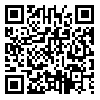BibTeX | RIS | EndNote | Medlars | ProCite | Reference Manager | RefWorks
Send citation to:
URL: http://jccnc.iums.ac.ir/article-1-64-en.html
2- Department of Nursing, University of Social Welfare and Rehabilitation Sciences, Tehran, Iran.
3- Department of Statistics and Epidemiology, School of Health, Shahid Beheshti University of Medical Sciences, Tehran, Iran.
4- Department of Medical Surgical Nursing, School of Nursing and Midwifery, Iran University of Medical Sciences, Tehran, Iran.
Background: Nurses are at risk of injuries caused by sharp instruments in hospitals. The objective of this study was to investigate the frequency of injuries due to sharp instruments and its relevant factors among nurses of Imam Reza Hospital, Kermanshah, Iran.
Methods: This descriptive-analytic study was conducted on 258 nurses working at Imam Reza Hospital of Kermanshah, Iran, in 2013. The data collection measure was a researcher-made questionnaire, which its validity and reliability were verified. The obtained data were entered into SPSS, version 16 and were analyzed using the Chi-squared and ANOVA test at the significance level of P<0.05.
Results: According to the findings, 73.3%(n=191) of nurses were exposed to sharp injuries at workplace. About 41.8% of cases occurred during the first year of nursing. Major injuries were caused by needle-sticks (73.3%) and then IV catheter (42.4%). About 43.5% of the observed injuries occurred while trying to recap the needle-sticks. Also, 38.52% of injured nurses performed the tests after injury screening, while 48.7% did nothing after being injured.
Conclusion: With regard to the findings of this study, human and environmental factors are effective on these exposures and environmental factors are much effective than human factors. It seems necessary to train the personnel, observe general precautions, and change wrong behaviors namely needle re-capping.
Received: 2015/04/17 | Accepted: 2015/08/30 | Published: 2015/11/1
| Rights and permissions | |
 |
This work is licensed under a Creative Commons Attribution-NonCommercial 4.0 International License. |





